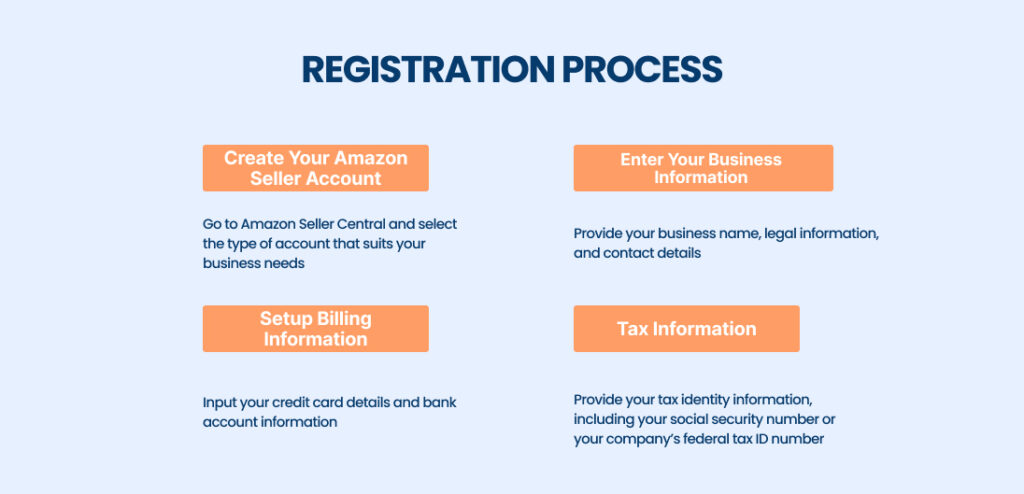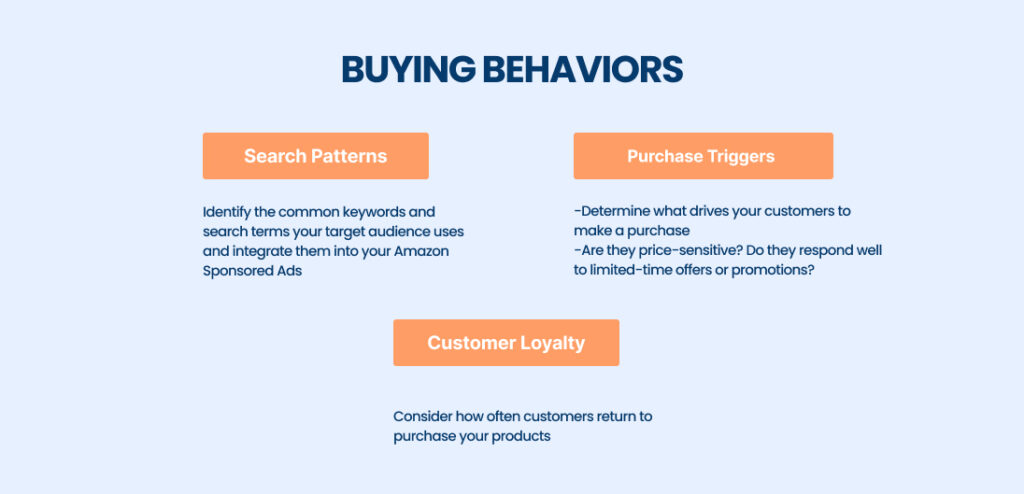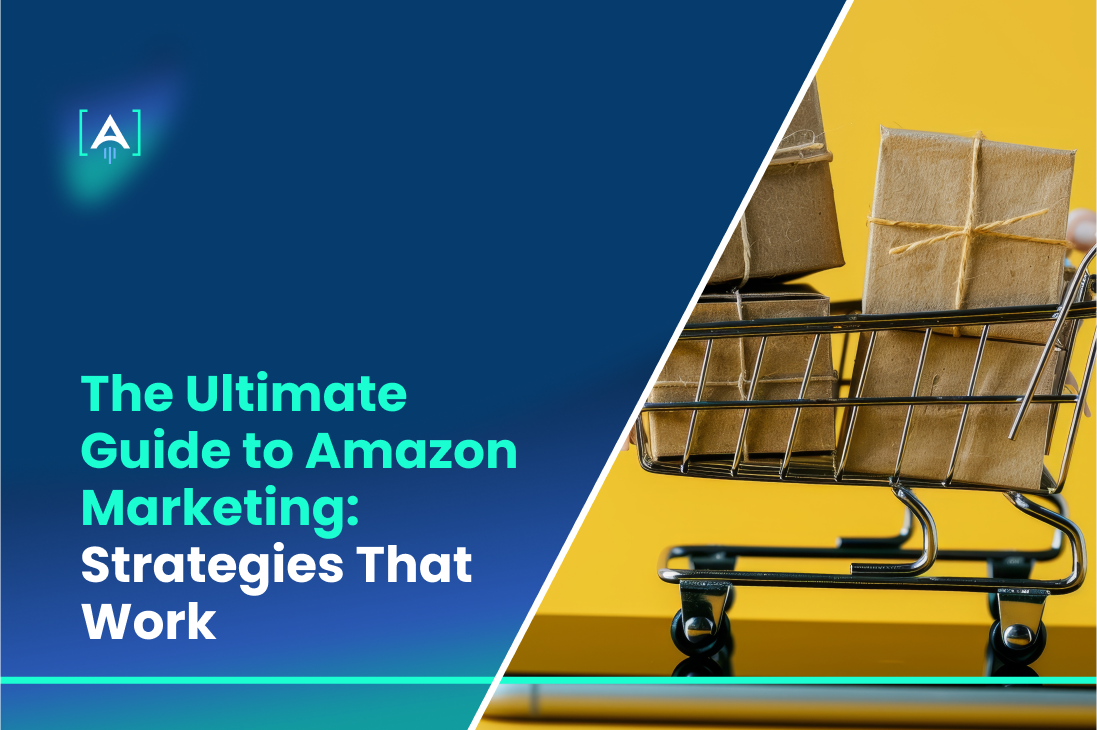The Amazon is a challenging marketplace. Survival requires more than just a good product. It demands a strategic approach.
To thrive in this vast online marketplace, you must cut through the noise and connect with consumers.
According to estimates, Amazon claimed the top spot among online retailers in the United States in 2023, capturing 37.6 percent of the market.
Source: Market share of leading retail e-commerce companies in the United States in 2023, Statista
Utilizing Amazon Ads can be instrumental in capitalizing on this vast audience. The processing can be even more challenging if you have no assistance. Amazon Ads Agency can contribute to your business’s growth and success by expertly managing your advertising campaigns, optimizing your ad spend, and increasing your visibility among targeted audiences on Amazon.
From optimizing product listings and mastering SEO to harnessing the power of Amazon Ads and engaging directly with customers, we’ll explore how these strategies can help elevate your brand, boost your sales, and secure a competitive edge.
Understanding the Amazon Marketplace
Understanding the Amazon Marketplace is crucial for any business that wants to effectively leverage Amazon marketing and advertising. This vast e-commerce platform is a retail site and a competitive market where millions of sellers strive to attract buyers through strategic product placements and advertisements.
Source: Annual net sales of Amazon in selected leading markets from 2014 to 2023, Statista
The cornerstone of successful Amazon marketing lies in creating and managing Amazon ads. These advertisements are tailored to enhance product visibility and drive sales through targeted strategies. In 2024, Amazon’s brand value increased by 23 percent, standing at 577 billion U.S. dollars.
Businesses must understand the mechanics of creating Amazon ads, which involves selecting the right keywords for Amazon ads, setting a sensible Amazon ads cost structure, and continuously managing campaigns to optimize results. This process is critical in ensuring ads reach their intended audience and generate the desired outcomes.
Amazon ads management is an ongoing task that requires a deep understanding of Amazon’s unique marketing environment. Advertisers must frequently analyze and adjust their strategies, responding to changes in consumer behavior and competitor tactics.
Effective management also includes budget control, where understanding the costs associated with different types of ads, such as sponsored brands and sponsored product ads, becomes essential. This helps in maintaining a balance between visibility, cost, and ROI.
Setting Up Your Amazon Seller Account
For those wondering how to create Amazon ads, the process starts with selecting your product, choosing your target keywords, setting your budget, and designing compelling ad content.
Navigating the setup of an Amazon Seller account can seem daunting. Still, it’s a crucial step for any business looking to tap into the expansive reach of this global online marketplace.
Source: Amazon
By carefully selecting the right seller category and understanding the necessary legal and tax considerations, you can position your business for success on Amazon. This guide will lead you through the essential steps to effectively set up your Amazon Seller Account, laying a solid foundation for your Amazon marketing and advertising strategies.
Choosing the Right Seller Category
Before you can begin selling on Amazon, you must decide which seller category fits your business model best. Amazon suggests two primary types of seller accounts: Individual and Professional.
Your choice between these categories should be based on your business size, anticipated sales volume, and broader digital marketing strategy.
- Individual Seller Accounts are best suited for businesses that expect to sell fewer than 40 items per month. They don’t require a monthly subscription fee, but Amazon charges $0.99 per item and additional selling fees, making this a good option for smaller sellers or those just starting out.
- Professional Seller Accounts are designed for higher-volume sellers. They charge a monthly fee of $39.99 but eliminate the $0.99 per item fee.
This account type offers access to advanced selling tools, such as APIs and bulk listing capabilities, essential for scaling operations. It also allows you to create new product listings, use Amazon advertising tools like Headline Search Ads and Product Display Ads, and run promotions, which are crucial for a robust Amazon marketing strategy.
Choosing the right category will affect how you manage your Amazon ads costs and how effectively you can implement your marketing strategies.
Essential Steps for Account Setup
Setting up your Amazon seller account involves several key steps, each critical to ensuring that your store operates smoothly and complies with Amazon’s policies.
Registration Process
To start, visit Amazon’s official site and register for a seller account. You must provide basic business information, including your legal name, address, and contact information.

Completing these steps will create your basic seller profile on Amazon.
Legal and Tax Considerations
Understanding the legal and tax implications of selling on Amazon is critical. Here’s what you need to consider:
- Tax Obligations: Depending on your location, you may be required to collect sales tax on your transactions. Amazon offers services like the Marketplace Tax Collection, which automatically calculates, collects, and remits sales tax on behalf of sellers for transactions in certain states. However, it’s important to understand your responsibilities in jurisdictions where this service isn’t available.
- Intellectual Property Considerations: Ensure your product listings do not violate copyright or trademark laws. Amazon strictly enforces its policies regarding intellectual property to maintain a fair and trustworthy marketplace.
- Import/Export Laws: If you ship products internationally, be aware of the import and export laws. Non-compliance can lead to severe penalties, including suspension of your Amazon account.
Addressing these legal and tax considerations during your Amazon seller account setup can help you avoid potential pitfalls that might hamper your ability to sell effectively and scale your operations.
Crafting Your Amazon Marketing Plan
Developing a strategic marketing plan that aligns with your business objectives is essential to achieving sustained success on Amazon.
This involves setting clear goals, establishing a realistic budget, and gaining a deep understanding of your target audience.
Goal Setting and Budgeting
The first step in crafting your Amazon marketing plan is to define clear, measurable goals. Whether you aim to increase brand awareness, boost product sales, or achieve a specific revenue target, having concrete goals will guide your marketing strategies and help measure success. Here’s how to approach this:
- Set Specific Objectives: Determine what you want to achieve through your Amazon marketing efforts. Objectives can range from increasing sales by 20% within six months to launching three new products in the next quarter.
- Budget Allocation: Once your goals are set, allocate a budget that supports these objectives. This includes deciding how much to spend on different Amazon ads, such as Amazon Sponsored Ads, Amazon Display Ads, and Amazon Video Ads. Consider the costs associated with each ad type and how they fit into your overall marketing strategy.
- Resource Distribution: Assign resources based on the goals and the budget. This might include hiring additional staff for campaign management or investing in software tools to automate and track ad performance.
It is crucial to understand how to distribute your budget across various advertising formats on Amazon. For instance, depending on your product type and target audience, sponsored ads might require a different investment level than display ads or video ads.
Understanding Your Audience
For your Amazon marketing plan to be effective, you must thoroughly understand who your customers are. This includes analyzing customer demographics and buying behaviors, influencing how you target and communicate with potential buyers.
Customer Demographics
Customer demographics provide valuable insights into the age, gender, location, income level, and more of your target audience. This information can be instrumental in tailoring your marketing efforts:
- Targeted Advertising: Use demographic data to create targeted ad campaigns. For example, if your products appeal more to millennials, consider using more visually-oriented Amazon Display Ads or engaging Amazon Video Ads that resonate with a younger audience.
- Product Recommendations: Tailor your product recommendations based on demographic insights. Younger audiences may prefer trendier and tech-oriented products, whereas older customers might prioritize durability and value.
Understanding demographics helps refine the keywords for Amazon ads, ensuring that your content and ads appeal to the specific segments of the Amazon marketplace that are most likely to purchase your products.
Buying Behaviors
Analyzing buying behaviors involves understanding how different customer segments find and purchase products on Amazon.

By combining an understanding of demographics and buying behaviors, you can create a powerful Amazon marketing strategy that targets the right audience with the right message at the right time, enhancing the effectiveness and efficiency of your Amazon advertising efforts.
This strategic approach helps manage Amazon advertising costs and builds a strong brand presence that can sustain growth over the long term.
Optimizing Product Listings
Optimizing product listings is a pivotal aspect of ensuring Amazon’s success.
This process involves implementing effective search engine optimization (SEO) techniques tailored for Amazon’s unique platform, ensuring that your products are visible, appealing, and targeted effectively to stand out among competitors.
Importance of SEO for Amazon
SEO for Amazon is crucial because it directly influences how easily potential customers can find your products through search.
Source: Ahrefs
Unlike traditional SEO on platforms like Google, Amazon’s SEO focuses more on conversion rate optimization, sales velocity, and relevance. This is because Amazon’s ultimate goal is to provide information and drive transactions.
- Visibility: Optimized listings appear higher in Amazon search results, making them more visible to potential buyers. This increased visibility leads to higher traffic and, consequently, more sales.
- Competitiveness: With millions of sellers on the platform, standing out through better-optimized listings is crucial. Effective SEO helps differentiate your products from competitors, capturing more market share.
- Conversion: Well-optimized listings are about more than attracting visitors—they’re about converting them into customers. This includes using compelling images, detailed and persuasive product descriptions, and strategic keyword placement.
Keyword Research and Optimization
Keyword research is the cornerstone of effective Amazon SEO. It involves identifying potential customers’ words and phrases when searching for products like yours.
Optimizing your listings with these keywords ensures your products appear in relevant searches, improving visibility and sales.
- Keyword Identification: Start by using tools such as Amazon’s Keyword Tool or third-party tools like Helium 10 or Jungle Scout. These tools help identify high-volume keywords relevant to your products.
- Strategic Placement: Once you have your keywords, strategically place them in your product titles, descriptions, bullet points, and backend keywords. Make sure that keyword usage flows naturally in content to enhance readability and customer experience.
- Continuous Optimization: Keyword trends can change over time as consumer behavior evolves. Regularly update your listings to reflect new search trends and eliminate outdated terms that might be ineffective.
Implementing keywords effectively contributes significantly to your Amazon marketing strategy, making your products more discoverable and attractive to shoppers.
Competitor Analysis
Competitor analysis on Amazon is not just about knowing your competitors’ products but also understanding how they optimize their listings and how you can leverage this knowledge to your advantage.
- Benchmarking: Look at top-performing competitors in your category. Analyze how they format their titles, what keywords they use, their pricing strategies, and their customer feedback. This information can provide insights into what works well in your niche.
- Differentiation: Identify gaps in your competitors’ listings or areas where your product can stand out. This might be through better-quality images, more comprehensive product information, or more appealing price points.
- Tracking Changes: Monitor any changes your competitors make to their listing optimization strategies, such as keyword adjustments or product feature changes. This will help you stay competitive and react quickly to market changes.
Incorporating a thorough understanding of SEO and competitor strategies into your Amazon listings enhances your visibility and bolsters your overall Amazon advertising efforts.
Whether through Amazon DSP ads, which allow for dynamic advertising solutions or targeted Sponsored Products campaigns, robust SEO and meticulous competitor analysis can benefit every element of your Amazon strategy.
This holistic approach ensures that every aspect of your online presence on Amazon is fine-tuned for maximum effectiveness, contributing significantly to your overarching digital and social media marketing strategies.
Enhancing Your Product Images and Descriptions
A fundamental aspect of succeeding on Amazon involves compellingly presenting your products through images and descriptions. These elements are not just informational but crucial marketing tools that can influence buying decisions, enhance customer experience, and elevate your brand’s perception.
High-quality images and detailed, persuasive descriptions form the backbone of effective Amazon marketing strategies, helping to attract customers and boost brand awareness.
Best Practices for Photography
In the competitive landscape of Amazon, the quality of your product images can directly influence the success of your marketing campaigns. Here are some best practices for photography that can help make your listings stand out:
- High-Resolution Images: Amazon allows for high-resolution images, and it is crucial to use this feature.
Detailed, clear images help attract attention and allow customers to zoom in and see product details, reducing uncertainty and leading to higher conversion rates. - Use Multiple Angles: Provide multiple images from different angles to comprehensively view the product. This approach helps to reduce the gap between online shopping and the tangible in-store experience, where customers can handle a product.
- Lifestyle Shots: Incorporate lifestyle images that show your product in use. This helps customers visualize using the product themselves and enhances the lifestyle appeal, making it more desirable.
- Consistency: Keep your imagery style consistent to help build brand identity. Consistent use of lighting, angles, and backgrounds can contribute significantly to brand recognition and trust.
- Professional Lighting: Good lighting is critical. Ensure that your products are well-lit, with natural light or professional lighting setups that highlight the product’s features without creating harsh shadows or distortions.
Investing in professional product photography can profoundly impact your Amazon marketing tactics, significantly influencing how customers perceive the quality and value of your products.
Writing Effective Descriptions
Beyond photography, describing your product is pivotal in converting visitors into buyers.
Source: Azarian Growth Agency
Adequate product descriptions provide essential information and persuade potential customers through targeted marketing strategies. Here’s how you can write compelling descriptions:
- Highlight Key Features: Begin with your product’s most important features. Use bullet points for easy readability, ensuring that these points are benefit-oriented, addressing how the product solves problems or improves the customer’s life.
- Use Persuasive Language: Incorporate persuasive writing techniques that encourage purchase decisions. Phrases like “must-have,” “easy-to-use,” or “innovative design” can trigger emotional responses that lead to sales.
- SEO Optimization: Integrate relevant keywords naturally into the product descriptions to improve visibility on Amazon searches and Google Ads. However, ensure the primary focus remains on creating readable and informative content.
- Be Specific: Provide detailed information about the product, including dimensions, materials, compatibility (if applicable), and any other relevant data. Specific details help build trust and lower the chance of returns due to unmet expectations.
- Tell a Story: Use storytelling to connect emotionally with potential buyers where applicable. This can be especially effective for products with unique backgrounds, craftsmanship, or special features.
- Call to Action: End with a compelling call to action encouraging purchases. This might remind of limited stock, an upcoming sale, or simply reiterating the product’s unique selling proposition.
Enhancing your product images and descriptions is not just about adhering to Amazon’s marketing strategy; it’s about creating a compelling, persuasive online presence that captures and holds customer interest.
By focusing on professional-quality photography and strategically crafted descriptions, you position your products more attractively. This ultimately helps attract and convert more customers, drives sales, and elevates your brand on Amazon.
Partner with [A] Growth Agency for Your Amazon Marketing Strategy
Amazon is a dynamic ecosystem, and what works today might evolve tomorrow. Continuous optimization and experimentation are key. Moreover, the right strategies can significantly increase your chances of success.
Want to supercharge your Amazon journey? Consider partnering with [A] Growth agency that will turn your entrepreneurial dreams into reality with effective, tailored growth strategies. We will provide expert guidance and resources to maximize your potential. Together, we can transform your Amazon store into a thriving marketplace powerhouse.
Are you ready to dominate Amazon?

